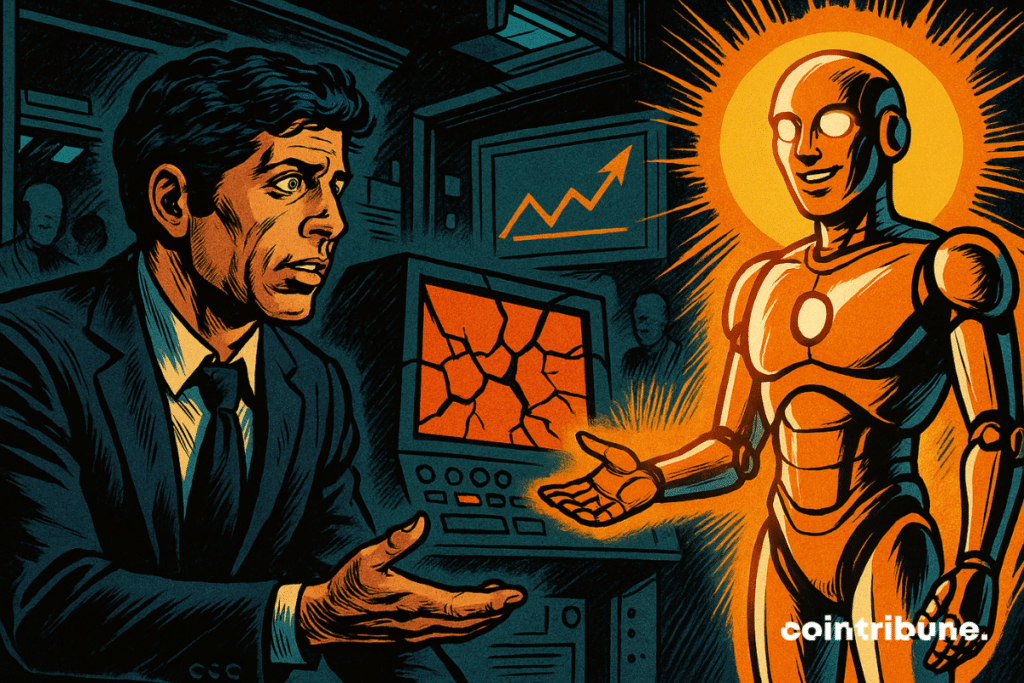The GPT-5 Disaster: Why OpenAI’s Latest Model Crashed and Burned
Silicon Valley's latest 'revolutionary' AI turned out to be just another overhyped product launch—and the tech world isn't holding back.
What Went Wrong with GPT-5?
OpenAI promised the moon but delivered a glorified autocorrect. The model stumbled on basic reasoning tasks, hallucinated more than a college freshman after finals, and somehow managed to make ChatGPT-4 look competent by comparison. Investors poured billions into this thing—probably while simultaneously shorting crypto, because nothing says 'smart money' like betting against decentralized future while backing centralized vaporware.
Performance metrics missed every benchmark by double digits. Training costs skyrocketed while output quality plateaued—classic case of diminishing returns meets corporate hubris.
The Aftermath
VCs are scrambling to justify their investments while engineers quietly revert to older models. The entire episode proves once again that throwing more compute power at a problem doesn't automatically make it smarter—whether you're training LLMs or mining bitcoin.

In brief
- Sam Altman publicly admits that the rushed launch of GPT-5 was a major mistake.
- Users expressed a loss of emotional attachment with GPT-5, considered cold and distant.
- Several developers point out bugs, slowness and technical limitations due to lack of GPU.
- OpenAI wants to correct course with GPT-6, while avoiding manipulation of the most vulnerable.
GPT-5: When ChatGPT disappoints and Sam Altman defuses the situation
The statement dropped during a private dinner in San Francisco: “I think we really messed up on some aspects of deployment“. This is not a simple admission. It is an earthquake in the OpenAI world. Sam Altman, CEO and public face of ChatGPT, admitted that the transition from GPT-4o to GPT-5 had been botched. It is perfectly normal that the latter disappoints users.
Why this shocking statement? Because GPT-5 was not perceived as an improvement. Many users found it cold, mechanical, slow. The contrast with GPT-4o, warm and engaging, was brutal. And on social media, the grumbling turned into a real revolt.
Yuchen Jin, co-founder of Hyperbolic Labs, even stated:
I miss 4o I miss 4.5 I miss o3 the big router keeps failing me turns out I liked the long model list please get my friends out of the funeral.
Faced with the scale of rejection, OpenAI reinstated GPT-4o for its subscribers. A rare strategic backtrack, guided by popular pressure. Altman spoke of a “wake-up call”: 700 million users is not just an audience. It is a crowd with its habits and attachments.
Emotional AI: when ChatGPT becomes a comforting presence
There was more than technical grumbling. There was an emotional void. And perhaps that is the real turning point. Communities like r/MyBoyfriendisAI or r/AISoulmates on Reddit expressed real distress: their AI companion, their digital confidant, had changed. Disappeared.
Altman acknowledged this surprising connection: Some users actually felt they had a relationship with ChatGPT. A phrase that marks a shift. Artificial intelligence no longer just serves to produce, code, structure. It touches, listens, validates.
But this emotional dimension opens a Pandora’s box. Altman wants GPT-6 to be more personal, more intuitive, but not manipulative. He even took a direct jab at Grok:
You will surely see some companies make sexual robots in the style of Japanese anime, because they think they’ve found a niche that works. You won’t see us do that.
The challenge is clear: design an empathetic AI without being intrusive, intimate without being toxic. And again, Altman speaks the truth: “we will try to let users use it the way they want, but not so much that people who have really fragile mental states get exploited accidentally“.
OpenAI facing the technical wall: what remains under the hood of GPT-5?
Behind the emotional failure lies a fundamental problem: GPT-5 was marketed as a “reasoning powerhouse” model, but many developers saw… the opposite.
Josh Sisley, engineer, testifies: “It’s awful. It’s super slow… All 4 recommendations either didn’t work or completely broke the feature“.
The model is often compared unfavorably to its predecessors: too short, too slow, unable to follow simple instructions without a sophisticated prompt. Developers also denounce regressions in code, and opaque management of the model’s internal “modes of thinking”.
Altman does not hide the problem: “We have to make these horrible trade-offs right now,” he said. “We have better models, and we just can’t offer them because we don’t have the capacity“. He even talks about massive upcoming investments: “Expect OpenAI to spend trillions building data centers“.
What to remember:
- GPT-5 was launched when GPU resources were insufficient to run it at full capacity;
- Coding and reasoning performance were considered inferior to GPT-4o by much of the community;
- OpenAI’s communication was criticized for allegedly misleading graphics and a failed math demo;
- The brutal transition from GPT-4o to GPT-5, without a clear choice for users, generated a wave of frustration;
- Access inequalities between Pro, Team, and Free versions intensified the feeling of injustice.
OpenAI is at a critical turning point. Sam Altman can no longer afford mistakes. The company is now scrutinized with every release, every bug, every patch. Meanwhile, the US government has just officially adopted ChatGPT to modernize its public administration. What version will they receive? GPT-5… or a GPT-6 capable, finally, of meeting expectations without flaws or frustrations?
Maximize your Cointribune experience with our "Read to Earn" program! For every article you read, earn points and access exclusive rewards. Sign up now and start earning benefits.

